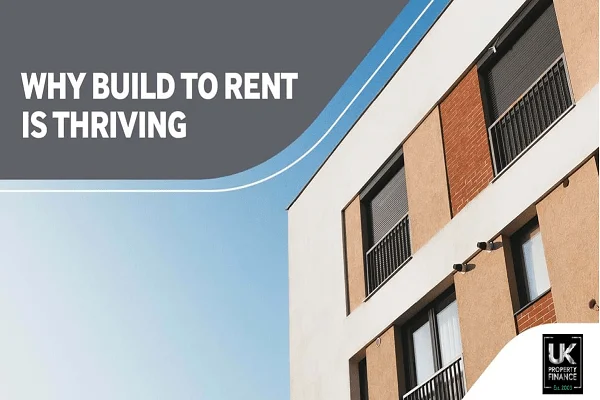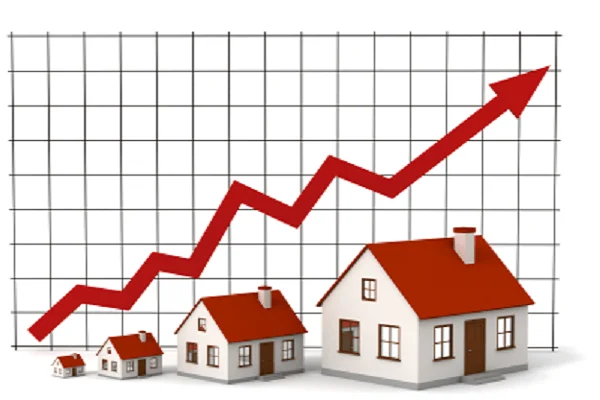Buy-to-Let Changes Landlords Need to Know in 2022
Over the next few months, buy-to-let landlords are to be hit by a raft of tax changes. From stamp duty rates to capital gains tax to buy-to-let tax relief alterations, things look set to become even more difficult for BTL landlords running businesses in the UK.
Income Tax Rates 2022
The current personal allowance (the amount you can earn before paying income tax) is up £70 from last year, now standing at £12,570. This is to remain fixed until 2027 at the earliest.
For this tax year, BTL landlords generating income between £12,571 and £50,270 will be taxed at a rate of 20%, those earning above this £50,270 threshold will be subject to 40% taxation, while the £150,000 threshold paves the way for 45% or higher rate taxation.
Capital Gains Tax
One welcome change to BTL legislation is the extension of the time landlords have to report and pay capital gains tax, following the sale of a property.
Reduced significantly from 22 months to just 30 days in April 2020, the grace period has now been doubled to 60 days.
Increases in capital gains tax had been predicted for some time, but are set to remain unchanged for the time being.
Tax Credit
For this tax year, BTL business owners will again be able to claim a tax credit worth 20% on interest payments, rather than deducting mortgage costs from their rental income.
It has now been five years since the government introduced its controversial tax changes for BTL landlords, gradually reducing mortgage tax relief each year until it was wiped out entirely last year.
Companies House data suggests that more BTL landlords set up limited companies when purchasing new rental properties last year than ever before, in order to avoid higher rate personal income taxation by instead paying corporation tax at a fixed rate of 19%.
Buy-to-Let Stamp Duty
All stamp duty incentives for BTL property purchases in England have now ended, which up until October 2021 provided buyers with the opportunity to save (on average) £2,000.
As of now, normal stamp duty rates have resumed for investors in England, as follows:
| Property price | Stamp duty rate | |
| £0 — £125,000 | 3% | |
| £125,001 — £250,000 | 5% | |
| £250,001 — £925,000 | 8% | |
£925,001 —
£1.5 million |
13% | |
| £1.5 million + | 15% |
Stamp duty obligations differ slightly for BTL property purchases in Scotland and Wales.
Other Buy-to-Let Regulation Changes
Along with the alterations to tax obligations outlined above, several further regulatory changes for BTL landlords have been outlined by the government.
Key proposals for the year ahead (part of the Levelling Up White Paper published by the government) include:
- A national landlord register
- the end of Section 21 evictions
- a minimum standard for all rental properties
- more fines and bans for rogue landlords
Legislation is also set to be introduced on the installation of CO2 alarms in BTL properties, along with the requirement for rental homes to meet elevated energy efficiency standards by law.
Average Rate Growth Hits Five-Year High, ONS Reports
Monthly rent prices are increasing faster than at any time recorded since February 2017, new figures from the Office for National Statistics suggest. A further 2% increase in England was noted in the year leading up to January, while rents in Scotland were up 2.6% during the same time and 1.4% in Wales.
Last month, the average cost of renting a home in the UK reached a new high of £969 per month.
Speaking on behalf of Hargreaves, senior personal finance analyst Sarah Coles commented on the worrying trend of already cash-strapped renters facing even bigger financial challenges.
“Rents are rising faster than any time in the past five years, forcing tenants to choose between squeezing their spending even harder or uprooting their lives,” she said.
“Either way, they’ll end up worse off.”
East Midlands records the fastest growth in the UK
The fastest increase in private rental costs was noted in the East Midlands, up around 3.6% year-on-year. Despite being home to the UK’s most expensive rental properties, the slowest growth over the same period was recorded in London: an increase of just 0.1%.
With no let-up in sight, experts are forecasting further rent hikes for the foreseeable future, at least.
“It looks like rises are set to go further too,” added Coles.
“Those who can’t stretch their finances to cover their costs face the horrible upheaval and expense of moving home. If their current landlord withholds any of their deposit, they’ll have to find more cash to cover this, on top of the moving costs themselves, which means they’ll be worse off, whatever they do.”
“The Royal Institution of Chartered Surveyors research found that a slide in the number of properties for rent and another rise in tenant numbers are filling agents with confidence that rental prices will be on the rise for months or even years. It expects rent to rise to an average of 5% over the next five years.”
A further blow to prospective homeowners
With the housing sector maintaining its record-breaking momentum built up over the past 12 months, average property prices continue to price millions of would-be buyers out of the market entirely.
Over the course of the year leading up to January, average house prices in England hit a new high of £293,000, while the average cost of purchasing a home in Wales hit £203,000. Across the UK, the average market value of a home is now £275,000, the highest in history.
Alan Fitzpatrick, vice president of lending operations at mortgage specialist Hibito, explained the significance of this year-on-year increase.
“This ONS data reflects the year of the Stamp Duty Holiday, from the first deadline in March, the extended deadline in June, and the lower threshold, which was payable until the end of September,” he said.
“To put this incredible one-year price rise into more context, £27,000 would be the 2022 take-home salary post-tax of someone earning £35,000 (more than the UK average full-time salary, which is £31,285).”
Looking ahead, Quilter mortgage experts see an eventual slowdown occurring, but not on such a level as to prove any real value to struggling buyers or renters.
“Any hopes of a downward tick in house prices have once again been dashed,” she said.
“While a reduction in house prices has not yet materialised, it seems inevitable that there will be a slowdown during the coming year, and there are many factors currently at play that could contribute.”
“While the scales of supply and demand remain firmly tipped in favour of the nation’s home sellers, there’s a good chance that the high rate of house price growth seen during the pandemic will now subside, replaced by more incremental gains during the year ahead,” he said.
The UK Construction Industry: The Biggest Growth Seen for Six Months
According to the PMI (HIS Market/CIPS UK Construction Purchasing Managers’ Index), the construction industry across the UK has grown at its quickest pace over the last six months, with the demand for more developments going through the roof.
Data showed an increased growth of 56.3 in the first month of the year, up from 54.3 in December 2021, indicating a strong start to 2022.
The last year has seen significant growth month on month, with figures above 50.0 indicating an expansion of the construction industry.
The report posted that, due to continuing haulage and delivery issues, as well as shortages in construction staff, there have been significant delays in receiving goods from suppliers.
The report added: “However, the peak phase of supply chain difficulties appears to have passed as the latest downturn in vendor performance was the smallest since September 2020.”
When looking at the individual areas of the development industry, it was noted that the house building sector showed the slowest increase in growth in the previous four months with figures of 54.3, while civil engineering stood at a growth of 53.2, but the best performer at 57.6 was commercial development.
Tim Moore, IHS Market Director, said: “Residential work increased at one of the slowest rates since spring 2020, which is an early sign that cost of living concerns and rising interest rates could start to dampen the post-lockdown surge in spending.”
Brokerage XTB market analyst, added: “The UK construction sector continued to gain momentum after a difficult end to 2021 thanks to an improvement in commercial activity, which helped offset a weak rise in house building.
“Improvements were also helped by a drop in cost inflation, which fell to a 10-month low thanks to an easing of supply issues, which have been affecting the sector for months.
“As a result, commercial work helped construction growth reach a six-month high, but with supplier lead times continuing to lengthen in January as staff shortages and a lack of haulage availability hindered deliveries, the situation continues to be uncertain.”
On the 3rd of this month, the B.O.E.’s Monetary Policy Committee increased the base rate from 0.25 to 0.5 in an attempt to combat the increasing inflation rate. The current inflation rate is 5.4%, which is predominantly due to the massive price hikes in gas and electricity. Inflation currently exceeds the Bank of England’s target by a massive 2%. The inflation rate is expected to hit its peak at 7.25% in April, which is approximately 2% higher than was predicted back in November 2021.
Build-to-Rent Rivals Buy-to-Let as Demand for Rental Property Increases
The hot topic of conversation among investors and developers at the moment is the exponential growth of the build-to-rent sector over the last few years. With the ever-increasing demand for rental properties, it isn’t surprising that this niche area of the property market has really taken off.
Up until now, the build-to-rent industry has been mainly led by London, but there are many regional towns and cities that are following suit, leading to a prediction by Savills that the size of the sector will double over the next few years.
Build-to-rent developments are giving the buy-to-let market some serious competition as they are tailored to suit the needs of today’s typical renter, often offering facilities that wouldn’t be seen in a traditional BTL property.
These BTR developments tend to be backed by institutional investors; however, there are always opportunities for individuals to invest in these projects.
The BPF (British Property Federation) has been analysing the performance of the build-to-rent market in order to report on its importance in tackling the housing shortage for UK renters.
While the sector has previously been more predominant in London, there is a significant increase in investment into BTR developments in other areas of the UK, particularly in the North. The last twelve months have seen 13,527 new homes currently under construction in regional cities, which is three times the number seen in London.
BPF director of real estate, Ian Fletcher, says: “The build-to-rent sector continues to expand rapidly, and in 2021 we started to see signs that delivery across the regions is beginning to outpace London.
“It is not just about increasing housing provision; it is a major economic driver, helping attract and retain skilled workers and serving as a catalyst for urban regeneration.
“The strong growth of the BTR sector across the regions will support the government’s levelling-up initiative and help revitalise town and city centres.”
The growth of the build-to-let sector can be mainly attributed to the desperate need for affordable rental property, as demand is significantly higher than supply. With more people taking on mortgages later on in life or deciding that they prefer the flexibility that the renting world offers, it can be safely predicted that the market for BTL will continue to grow in strength.
Buy-to-let developments are typically looking at long-term residents when it comes to the facilities that they offer. For example, communal outside spaces, workspaces, gyms, and other conveniences would suit today’s modern living, particularly for people who work from home.
Data released by BPF shows 70,785 buy-to-rent units in the UK, an increase of 26% from the previous year. 141,215 BTR properties are under construction or currently being planned, which is an increase of ten thousand since 2020.
Manchester, Sheffield, Birmingham, and Liverpool have seen a year-on-year rise of 27% in buy-to-let properties under construction. This is an increase of around 26,820 as of the last quarter of 2021.
Jacqui Daly, a director of residential research at Savills, says: “The geographic spread of build-to-rent shows that many more local authorities are beginning to understand the need for new rental stock, and planning consents are rising as a consequence.
“At the same time, BTR is becoming hugely competitive for investors, with a record level of capital deployed in the sector in 2021. If investors are able to find markets and stocks to invest in, we expect delivery in the sector to double within a few years.”
Another vital advantage of the growth of the build-to-let market is the positive impact it can have on the environment, as developments are designed to support the government’s ESG (environmental and social governance) targets.
Robert Sloss, group chief executive and founder of HUB Residential, says: “City living in well-designed buildings can significantly reduce residents’ carbon footprints, so it is encouraging that metropolitan BTR is increasingly in demand across the country. We want to see an intelligent and measurable approach to carbon reduction and ESG.”
A Return to Double Digits for UK Property Price Growth
Annual house price growth for November is reported to have risen to 10%, up from 9.9% recorded in October, according to the Nationwide index.
Continuing to rise, the UK house price increase hit double digits following the end of furlough and the stamp duty holiday, indicating that demand remains strong. According to figures from Nationwide, the average UK property price rose by 0.9%, which followed an increase of 0.7% in the previous month. This takes the average UK house price to £252,687, an increase of 10% from the same period last year.
Property prices have increased to nearly 15% higher than levels seen back in March 2020, when the full effect of the pandemic first hit the UK. The reason for this continual rise can be put down to supply and demand, with a lack of homes available to buy. According to data from HMRC, October 2021 saw the quietest activity for almost a decade. Home sales were 28% lower this October when compared to October 2020, following a record high in activity early on in 2021.
In the same period, figures for mortgage application approval fell to the lowest levels seen for the last sixteen months.
“There have been some signs of cooling in housing market activity in recent months,” Nationwide’s chief economist, Robert Gardner, commented.
He added that this was “almost inevitable” after the stamp duty tax relief in the UK finished at the end of September, as buyers made every effort to bring forward their purchases to take advantage of the tax break.
“Activity has been extremely buoyant in 2021. The number of housing transactions so far this year has already exceeded the number recorded in 2020 with two months still to go and is actually tracking close to the number seen at the same stage in 2007, before the global financial crisis struck,” Gardner said.
He also added that he felt things looked a bit uncertain for the future: “It is unclear what impact the new Omicron variant will have on the wider economy.”
Gardeners felt that the expected rise in interest rates and the increased cost of living would further negatively impact the housing market.
The chief UK economist at Pantheon Macroeconomics, Samuel Tombs, said, “Mortgage rates look to be rising. Swap rates, which lenders use to price their loans, have increased, and profit margins on home loans are already very tight by past standards”, he said.
“Admittedly, the link between variations in mortgage rates and changes in house prices isn’t stable.”
Estate agent Knight Frank’s head of residential research, Tom Bill, commented, “Gravity-defying price growth is the result of low interest rates and tight supply, which are both things we expect to reverse next year, putting downward pressure on prices. Interest rates may rise more slowly if the new Omicron COVID-19 variant proves to be more serious than the early anecdotal evidence suggests.”
The new Omicron variant of the COVID-19 virus is sure to have a cooling effect on the property market, with many people holding back on selling their properties due to uncertainty in the future.
“The number of homes for sale coming on to the market is slowing, which is nudging prices steadily upwards,” said the chief executive of Property Finders, Jonathan Hopper.
Do I Really Need Family Life Insurance?
Life insurance is often overlooked as a seemingly superfluous expense. It is the kind of thing you hope you will never need and therefore assume you can do without.
Unfortunately, the financial complications that can accompany the death of a spouse or partner can make an already horrendous time in life practically impossible to negotiate.
Family life insurance provides priceless peace of mind for those closest to you in the form of essential financial support if the worst should happen.
What is life insurance?
Life insurance policies are typically finite, taken out over a specific period of time as required by the policyholder. The idea is that if you die or are diagnosed with a terminal illness during this time, a lump-sum payment is made to your spouse, partner, or family.
For example, if you take out a mortgage over 30 years, you may choose a similar life insurance term to ensure the debt will be covered.
In the event that a claim is made on a life insurance policy, the beneficiaries: For example, those you designate to receive the money can spend the funds any way they like. Most life insurance payments are used to clear outstanding mortgages and pay off other debts, though they may also be used to cover day-to-day living expenses.
Who needs family life insurance?
Family life insurance is considered essential when debts are taken on (such as a mortgage) that would be difficult or impossible for your family members to cover in the event of your death.
Likewise, family life insurance provides an essential financial safety net to cover essential living costs if the policyholder, who is the primary financial provider for the family, dies during the policy term.
All family life insurance policies are tailored in accordance with the income level, outgoings, and general financial situation of the policyholder. An effective life insurance policy will ensure that the beneficiaries named in the policy are supported financially. This will include debt repayment and living costs in the event that the policyholder dies.
How much does family life insurance cost?
Family life insurance policy costs vary significantly in accordance with the financial status of the policyholder, the length of the policy, and the extent of the coverage required.
It is technically possible to take out life insurance starting at around £5 per month. As a general rule of thumb, however, the lower the monthly premium, the lower the payment received by the policy’s beneficiaries if a claim is made.
Life insurance costs are also influenced by factors such as the applicant’s age, occupation, lifestyle, smoking status, medical history, and so on.
Is family life insurance really necessary?
The short answer is yes: family life insurance provides essential financial support if the worst should happen and priceless peace of mind if it doesn’t.
Nobody knows for sure what may be around the next corner. The fact that most life insurance terms pass without a claim being made does not mean it is a facility that should be overlooked.
Life insurance is all about taking care of those closest to you if you are no longer able to do so personally. There are policies available to suit all budgets, and the peace of mind that comes with quality coverage is often worth the low monthly premium alone.
Nationwide: Average House Price Hits Record high of £255,000
Average house prices in the UK have hit another all-time high. According to Nationwide, a typical home in the UK had a value of £254,822 in December, an increase of just under £24,000 compared to January last year.
But like most other major lenders, Nationwide predicted a gradual slowdown for the sector over the coming months, due in part to the withdrawal of the government’s temporary stamp duty holiday.
In addition, Nationwide believes that the spread of the Omicron variant of COVID-19 could adversely affect the market’s performance.
“The Omicron variant could reinforce the slowdown if it leads to a weaker labour market,” Nationwide’s chief economist, Robert Gardner, said.
Mr Gardner also said that the inevitability of interest rate hikes over the course of the year will have a “cooling influence” on the sector, which sustained its record-breaking performance throughout much of 2021.
Bank of England base rates were recently increased from a historic low of 0.1% to 0.25%, with more increases on the cards over the coming months. As mortgage rates grow and house prices hover at all-time highs, getting a foot on the property ladder is likely to become increasingly difficult for many first-time buyers.
“House price growth has outpaced income growth by a significant margin over the past 18 months, and, as a result, housing affordability is already less favourable than before the pandemic struck,” Mr. Gardner added.
The UK’s highest-growth regions
In stark contrast to traditional norms, London saw the lowest average property price increases over the course of the last 12 months, up 4.2% to just over £507,000. By contrast, average house prices in Wales skyrocketed by almost 16%, reaching a new high of £196,759.
A brief summary of house price growth by region in 2021:
- Wales: Up 15.8% to £196,759
- Northern Ireland: Up 12.1% to £167,479
- South West: Up 11.5% to £294,845
- Outer South East: Up 11.3% to £329,869
- North West: Up 11.2% to £196,806
- Yorkshire and Humberside: Up 10.8% to £190,855
- East Anglia: Up 10.4% to £268,146
- East Midlands: Up 10.4% to £221,813
- Scotland: Up 10.1% to £172,605
- West Midlands: Up 9.4% to £227,031
- Outer Metropolitan Area of London: Up 8.8% to £410,992
- North: Up 7.7% to £148,105
- London: Up 4.2% to £507,230
Commenting on the figures, Nationwide stated that this was the first time in the bank’s history that Wales had seen the largest annual house price growth of any UK region.
“Price growth remained elevated in Northern Ireland at 12.1%, the strongest end to the year for the region since 2007,” Mr Gardner said.
“Annual house price growth in Scotland was 10.1%, in line with the wider UK.”
Rents Rising at Fastest Pace since 2008, Data Suggests
Average monthly rents are rising faster than at any point in the past 13 years, the latest figures from Zoopla indicate; according to the property website, the average cost of renting a home privately was 4.6% higher in September year-on-year, coming out at £968 per month.
Annual rent growth was particularly strong outside London, averaging 6% compared to the same time last year. This is the fastest growth recorded for this part of the sector in more than 14 years.
Skyrocketing monthly rents continue to be fuelled by a lack of affordable inventory and high demand for quality homes in desirable parts of the country.
The Southwest saw the biggest gains of all, with average monthly rents increasing by 9% over the past 12 months. Wales recorded its strongest performance in years with 7.7% annual growth, followed by the East Midlands with just under 7%.
The gradual easing of lockdown restrictions has seen more activity in major cities and busy urban centres as many workers return to the office and life slowly edges back to normality.
The figures from Zoopla indicate annual rent growth in London of just 1.6%, but this is still a strong performance considering average rents were down around 10% at the beginning of the year.
Some of the top-performing cities in terms of annual rent growth were Nottingham and Bristol, both of which recorded growth of more than 8% since September 2020.
Search for space fuels ferocious competition
Speaking on behalf of Zoopla, head of research Grainne Gilmore said that there was still heavy demand for spacious properties in quieter and less densely populated corners of the country.
“Households looking for the flexibility of rental accommodation, especially students and city workers, are back in the market after consecutive lockdowns affected demand levels in major cities,” commented Gilmore.
“Meanwhile, just as in the sales market, there is still a cohort of renters looking for properties offering more space or a more rural or coastal location.”
Some parts of the country have seen the kinds of average monthly rent hikes that are pricing locals completely out of their own communities. In Purbeck and Dorset, for example, average monthly rents for September had increased by more than 16% since the same time last year.
Combined with high unemployment and lingering economic uncertainty, rising rents are creating a gloomy outlook for millions of private renters.
Dan Wilson Craw, Deputy Director of the campaign group Generation Rent, said the whole thing amounted to “terrible news” for current and prospective private renters.
“We have been hearing from renters who have lost bidding wars for homes or failed affordability checks, so they are being priced out of their areas,” he said.
“The chancellor has frozen rates for another year, so these rises will make it even harder to find an affordable home. The government has to do much more to bring rents down. That means building more homes, including social housing.”








